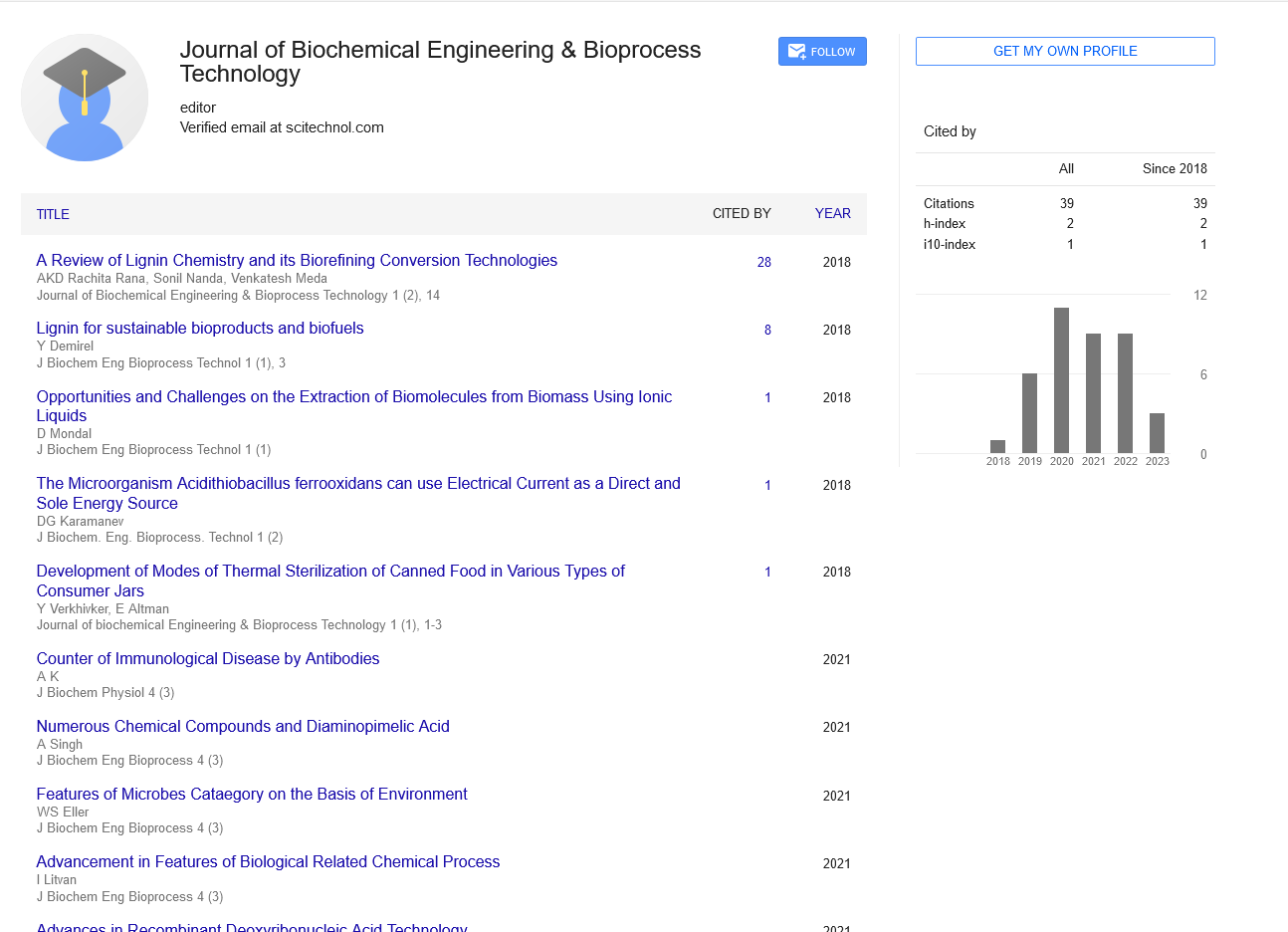Perspective, J Biochem Eng Bioprocess Vol: 6 Issue: 3
Bioreactor Engineering: An Overview
Wang Zhong*
Department of Bioreactor Engineering, East China University of Science and Technology, Shanghai, China
*Corresponding Author: Wang Zhong, Department of Bioreactor Engineering, East China University of Science and Technology, Shanghai, China; E-mail: zhongw@gmail.com
Received date: 17 August, 2023, Manuscript No. JBEBT-23-93177;
Editor assigned date: 21 August, 2023, PreQC No. JBEBT-23-93177 (PQ);
Reviewed date: 04 September, 2023, QC No. JBEBT-23-93177;
Revised date: 14 September 2023, Manuscript No. JBEBT-23-93177 (R);
Published date: 22 September, 2023, DOI: 10.4172/jbebt.1000065
Citation: Zhong W (2023) Bioreactor Engineering: An Overview. J Biochem Eng Bioprocess 6:3.
Introduction
Bioreactor engineering is the science of designing and optimizing bioreactors for the production of biological products, including biopharmaceuticals, biofuels, enzymes, and biomaterials. The process involves the selection of appropriate cell lines or microorganisms, the optimization of growth conditions, and the development of suitable bioreactor systems. This manuscript provides an overview of bioreactor engineering, including the different types of bioreactors, their design principles, and the various factors affecting bioreactor performance.
Description
Bioreactors are essential tools in bioprocess engineering for the production of biological products. They are vessels in which biological processes such as fermentation, cell culture, and tissue engineering are carried out. Bioreactor engineering involves the design, construction, and optimization of bioreactors to ensure that the desired biological product is produced in high yields and quality. The use of bioreactors has revolutionized the production of biologically derived products and has helped to meet the growing demand for sustainable and environmentally friendly products.
Types of bioreactors
There are several types of bioreactors, each with its own advantages and limitations. The most common types of bioreactors are stirred tank bioreactors, airlift bioreactors, bubble column bioreactors, and membrane bioreactors. Stirred tank bioreactors are the most widely used due to their versatility, scalability, and ease of operation. Airlift bioreactors are preferred for shear-sensitive organisms and high density cultures. Bubble column bioreactors are used for gas-liquid mass transfer and the production of low-density microorganisms. Membrane bioreactors are used for the production of high-value products, such as antibodies, by immobilizing cells on a membrane surface.
Design principles
The design of bioreactors is critical to ensure optimal performance and product quality. The design principles of bioreactors are based on the fundamental requirements of the biological system, including temperature, pH, oxygen transfer, and mixing. The bioreactor design should also consider the physical and chemical properties of the biological system, including cell density, viscosity, and nutrient requirements. The bioreactor design should also consider the scalability of the process to ensure that the process can be scaled up to meet commercial production requirements.
Factors affecting bioreactor performance
Several factors affect bioreactor performance, including the selection of cell lines or microorganisms, the optimization of growth conditions, and the design of the bioreactor system. The selection of cell lines or microorganisms is critical to ensure that the desired biological product is produced in high yields and quality. The optimization of growth conditions involves the selection of suitable media, temperature, pH, and other growth factors to optimize cell growth and product formation. The design of the bioreactor system should consider factors such as mixing, aeration, and shear stress to ensure optimal mass transfer and cell growth.
Conclusion
Bioreactor engineering is a critical discipline in bioprocess engineering, enabling the production of biologically derived products in high yields and quality. The selection of appropriate bioreactor systems and optimization of growth conditions are critical to ensuring optimal bioreactor performance. Advances in bioreactor engineering have contributed to the production of high-value products, such as biopharmaceuticals, biofuels, and biomaterials, and will continue to play a critical role in meeting the growing demand for sustainable and environmentally friendly products.
 Spanish
Spanish  Chinese
Chinese  Russian
Russian  German
German  French
French  Japanese
Japanese  Portuguese
Portuguese  Hindi
Hindi 